Bike riders are among the most vulnerable road users, and thousands lose their lives on America’s roadways each year. For instance, California has witnessed 6,170 bicyclist fatalities and serious injuries between 2019 and 2022. This doesn’t even include the number of bicycle accidents resulting in less serious injuries.
According to the Insurance Institute for Highway Safety (IIHS), about 2% of motor vehicle crash deaths nationwide involve cyclists. What’s more, fatality rates among riders aged 20 or older have quadrupled since 1975.
Experts aren’t sure what’s causing the rise in bike accidents, but they have some theories. People are driving more than they used to, distracted driving is more common in the age of smartphones, and biking is increasing in popularity. Additionally, many U.S. cities lack the infrastructure to support cycling safety.
Moving forward, let’s go over the latest bike accident statistics in California and nationwide. We’ll also discuss the most common causes of cycling accidents and how to use the road safely, whether you’re a driver or a bike rider.
Let’s dive in.
Bike Accident Quick Facts
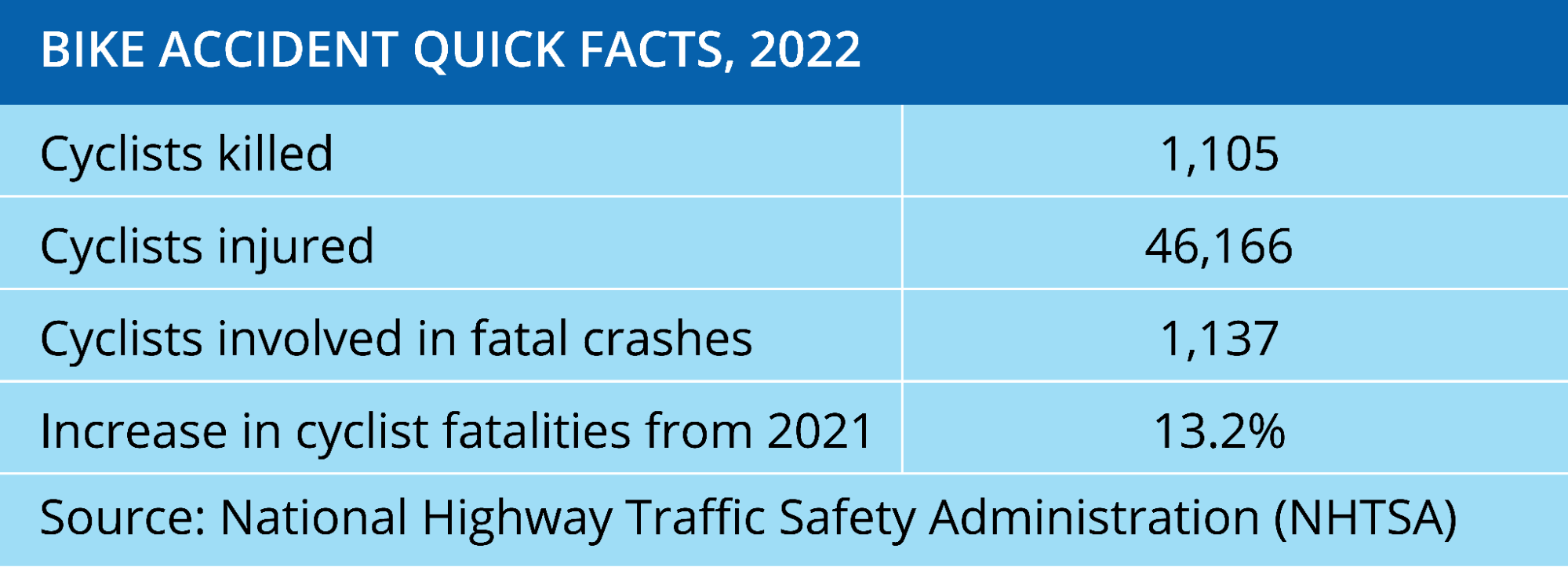
- Cyclists killed in 2022: 1,105
- Cyclists injured in 2022: 425,910
- Cyclists involved in fatal crashes: 1,137
- Increase in cyclist fatalities from 2021 to 2022: 5 percent
Traffic school can help you keep a clean driving record, prevent insurance increases, and more!
How Many Bicyclists Are Killed Each Year?
According to the NHTSA, 1,105 cyclists lost their lives on the road in 2022. However, this is just a rough estimate.
Additionally, data tends to be incomplete for at least several years, meaning we’re just beginning to get an idea of how many cyclists were killed and injured in 2021 and 2022, even though it’s now 2024.
Based on the current evidence, the number of fatalities involving bike riders is on the rise. Below are some estimates from the NHTSA’s Fatality and Injury Reporting System Tool (FIRST):
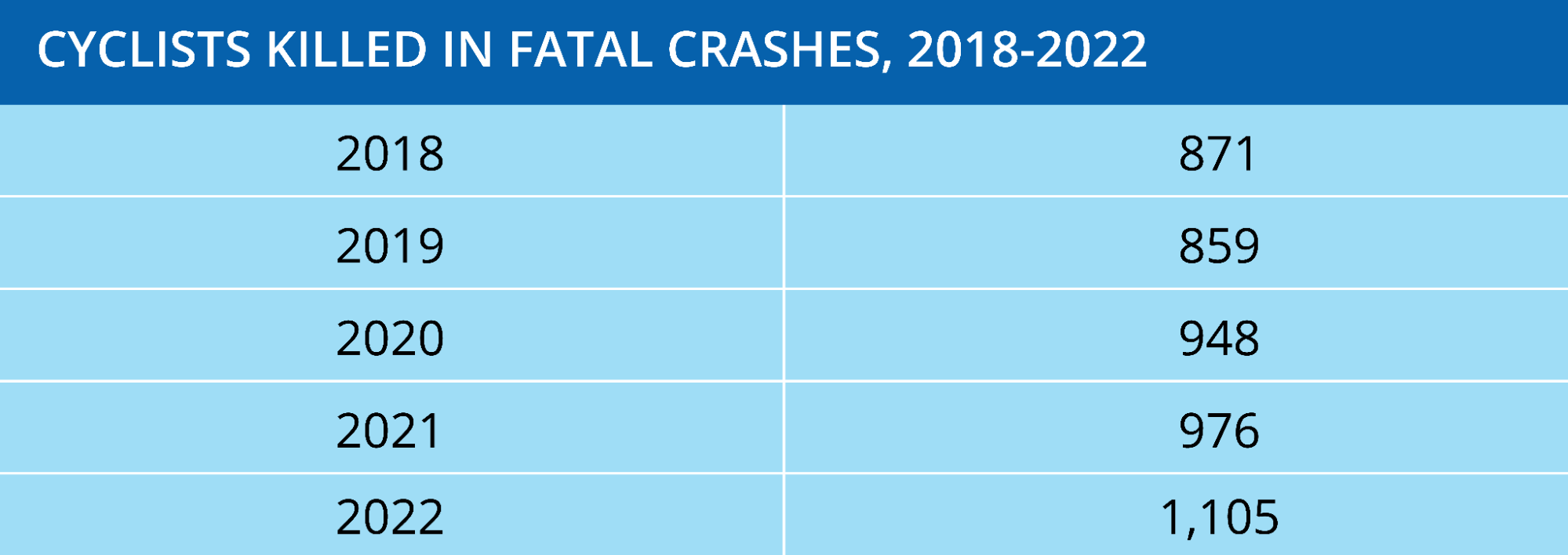
Sadly, 2022 was the deadliest year for bike riders. Most times, the cause of death is a head injury, says the IIHS.
Alcohol consumption plays a role, too. According to the IIHS, 19% of cyclists aged 16 and up who were killed in 2021 had a blood alcohol content (BAC) of 0.08% or higher.
How Many Bicyclists Are Injured Each Year?
According to the Consumer Product Safety Commission, emergency departments across the U.S. treated 405,411 injuries related to bicycles and bike accessories in 2022. Approximately 46,811 of these injuries resulted from traffic accidents, per the NHTSA’s FIRST database.
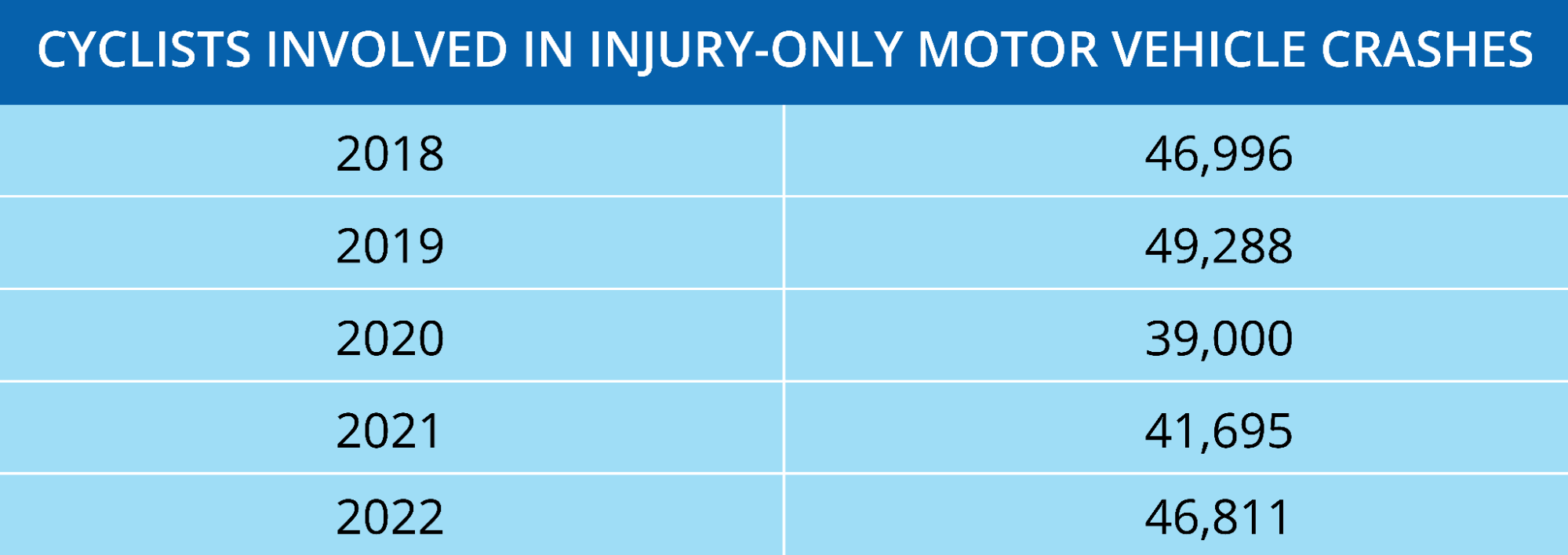
As shown above, the number of cyclists involved in injury-only motor vehicle crashes in 2022 was 12.2% higher compared to the previous year and 20% higher than in 2020.
Who Is Injured and Killed in Bike Accidents?
The risk of injury or death in a bike accident varies based on factors like age, sex, and time of the day or week.
For example, the Centers for Disease Control and Prevention (CDC) found that riders aged 55 to 69 are more likely to die in bicycle accidents than any other age group.
By comparison, teens and young adults are more likely to sustain serious cycling injuries. In fact, those ages 10 to 24 account for about one-third of bicycle-related injuries that require emergency care.
The CDC also reports that cyclist fatality rates are six times higher among men than women. On a similar note, bicycle-related injury rates are five times higher among males.
These findings align with those of the IIHS, which found that male cyclists are more likely to die in road accidents than women.
- In 2021, 61 men under 20 and 19 women in the same age group lost their lives in bicycle accidents.
- That same year, 754 men and 99 women aged 20 or older were killed while biking.
- 61% of all cyclists who died on the road in 2021 were not wearing helmets.
According to the IIHS, cyclist deaths in 2021 peaked in September (12%) and October (11%), with 22% of fatal accidents occurring between 6 PM and 9 PM.
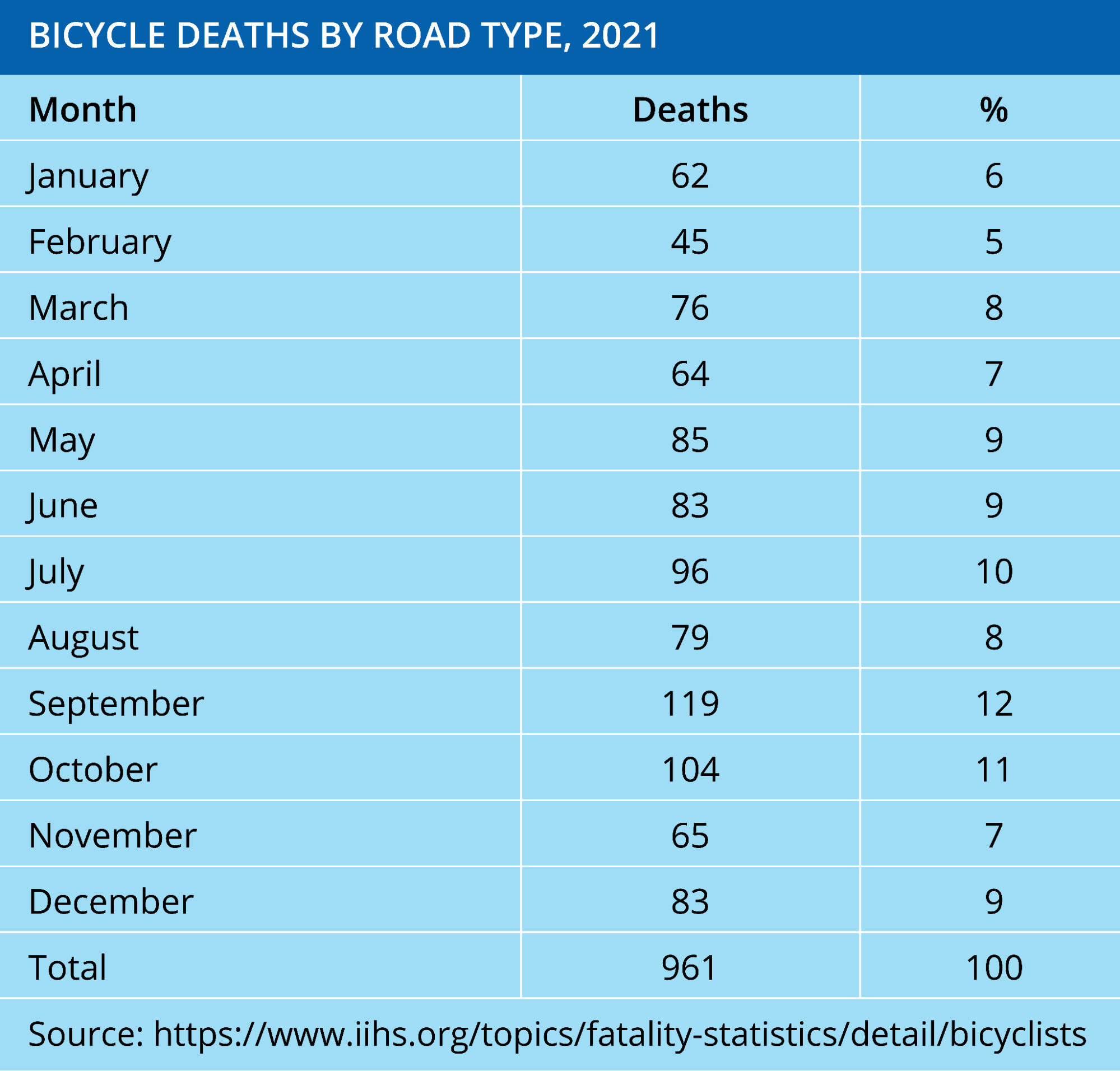
It’s also worth mentioning that 85% of riders were killed on urban roads in 2021. This percentage was much higher compared to previous years.
For example, fewer than 70% of the cyclists who died on America’s roadways in 2008, 2011, 2012, and 2013 were riding in urban areas.
Perhaps not surprisingly, 65% of bicycle fatalities in 2021 occurred on major roads. Another 2% took place on interstates and freeways, and 42% on minor roads.

Bike Accident Injuries and Deaths in California
California is one of the deadliest states for cyclists, with an average of 153 fatalities over the past five years. Most fatalities occurred in L.A. and other big cities, like Stockton, Sacramento, San Bernardino, and San Diego.
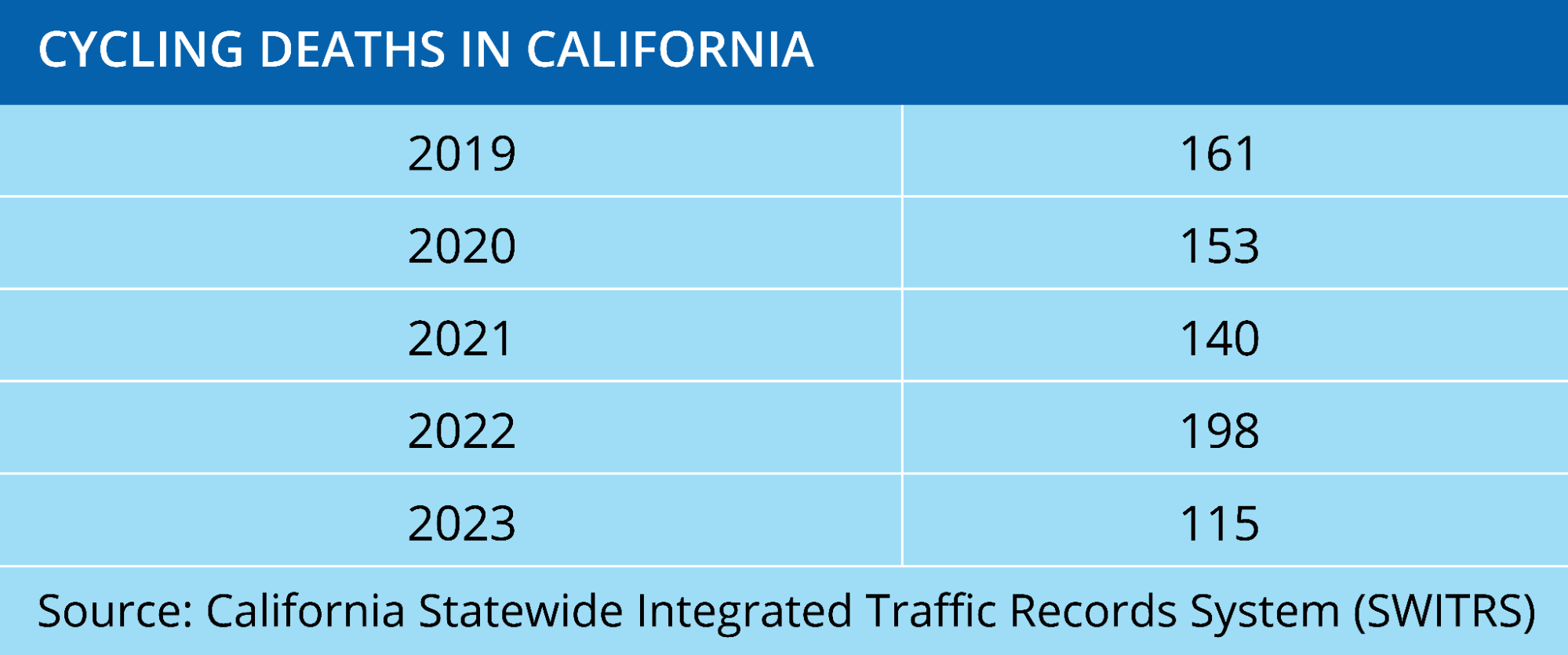
Between 2017 and 2021, around 718 bike riders were killed on California’s roadways. During that period, only Florida had more deaths (818).
Other states, such as Hawaii, Rhode Island, New Hampshire, Connecticut, Maine, and Delaware, had fewer than 50 fatalities involving cyclists over those five years.
Part of what makes California so dangerous for cyclists is its high population and large number of big cities. Plus, many of its roads are not bike-friendly.
For instance, Los Angeles alone contains 28,000 miles of street lanes, but only 19.4 miles of designated bike lanes. Most of these miles are spread over 11 streets, forcing riders to cycle in traffic.
What Causes Bike Accidents?
Failure to yield the right of way is the most common cause of cyclist fatalities. The second most common cause is that bike riders often go unseen by other traffic participants, reports the NHTSA.
Driving requires a lot of mental energy and can easily lead to cognitive overload. That’s why a driver could look straight at a cyclist and still fail to “see” him, a phenomenon known as inattentional blindness.
Simply put, our brain filters out the information we receive, focusing on what’s most important. This could be the car in front of you, the traffic lights, the itinerary, or other aspects. So, even if you can clearly see the cyclist, your brain won’t register this information.
Other studies indicate that 60% of adult bicycle crashes are the driver’s fault. By contrast, 90% of all bicycle crashes involving children are the cyclist’s fault.
But regardless of the rider’s age, cycling against the traffic contributes to one-third of bicycle-motor vehicle crashes. Other common causes include:
- Losing control of the bicycle
- Not using hand signals
- Riding a faulty bike
- Running red lights
- Cycling at high speeds
- Riding in heavy traffic
- Not wearing reflective gear
- Cycling under the influence
According to the IIHS, 908 of all cyclists aged 16 or older who died on the road in 2021 were under the influence of alcohol. This number was significantly higher than in the previous years, suggesting an alarming trend.
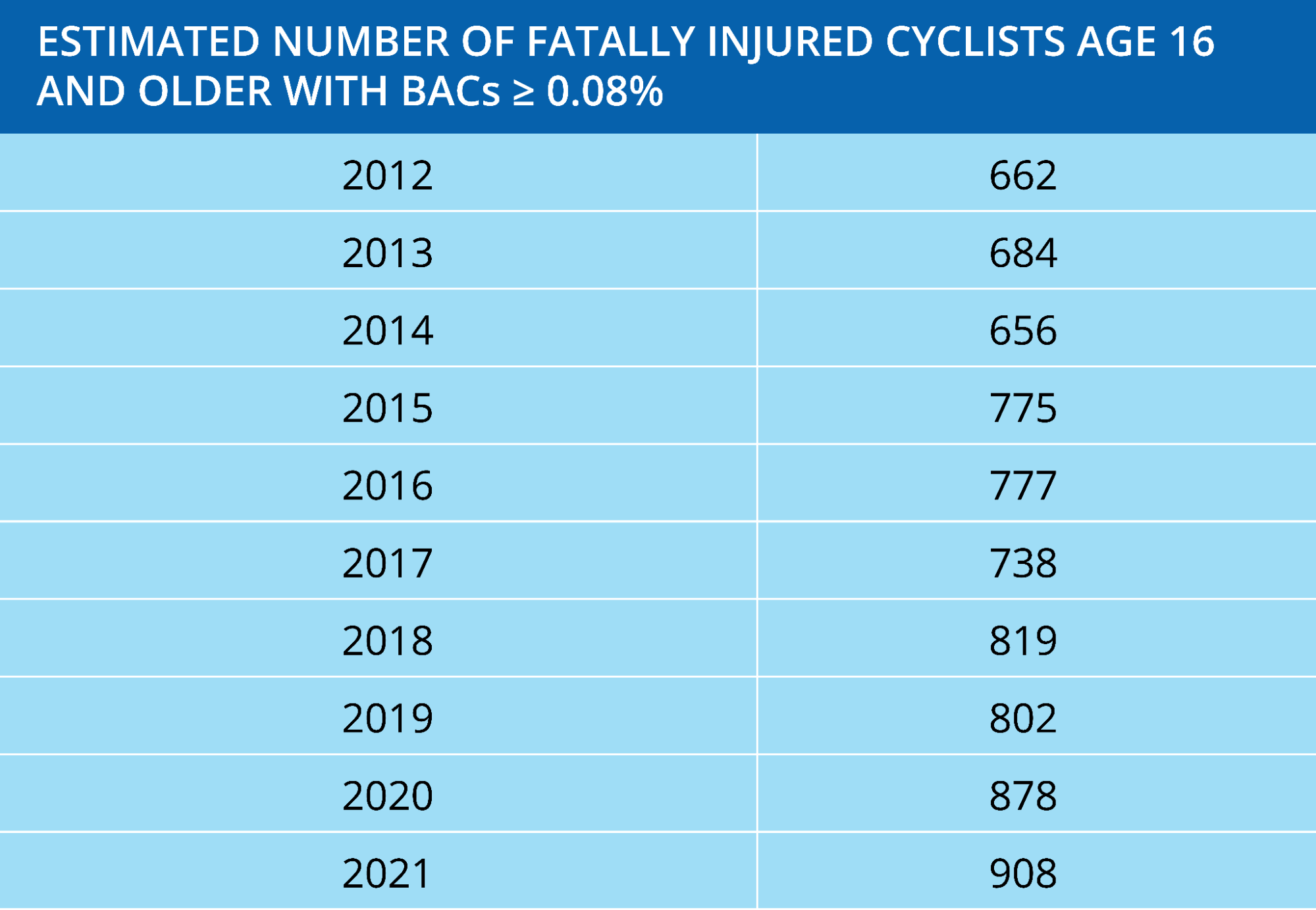
Is Bicycling Getting More Dangerous?
While nonfatal injuries in bike accidents are trending downward, deaths have been steadily increasing since about the mid-1990s. Experts aren’t exactly sure why, but they have a number of theories:
There Are Simply More Cyclists on the Roads
Cycling has been growing in popularity for years, especially in urban areas where fatal bike accidents are most common. The number of bike riders in the U.S. increased from 48.9 million in 2019 to 54.7 million in 2022.
One explanation is that with rising gas prices and climate change fears, many people (especially in big cities) are turning to cycling as a more affordable, greener way to commute.
People Are Driving More
In 2023, drivers traveled 3.263 trillion miles on the country’s roadways—and this number continued to rise. In March 2024, miles traveled increased by 0.7% compared to the same period of the previous year.
The more people drive, the higher the number of accidents on the road. Traffic congestion, distracted driving, alcohol consumption, and other factors all come into play.
Drivers Are More Distracted by Technology
The highest numbers of technology-related distracted driving deaths are likely behind us—those numbers peaked in 2019 and have been declining since many states began introducing legislation to ban screen use while driving.
However, distracted driving still accounts for hundreds of fatalities per year, even with the total numbers trending downward.
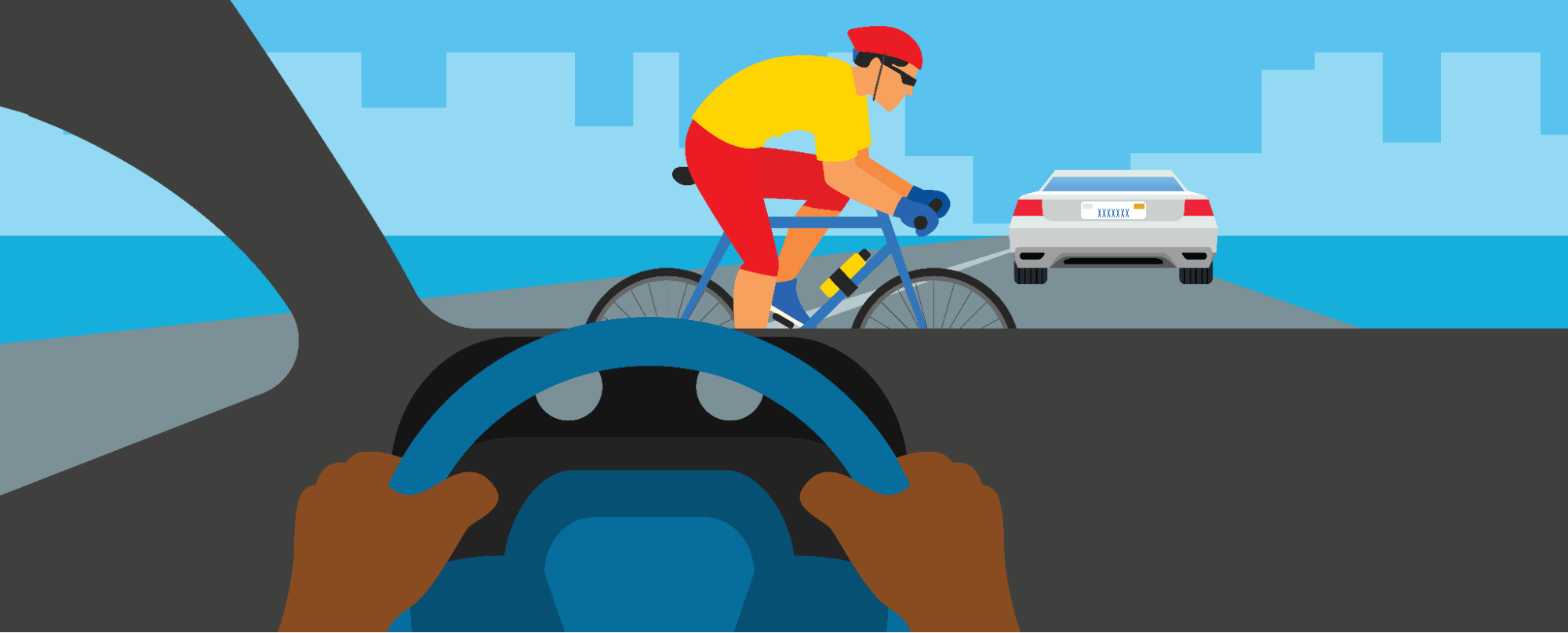
E-bikes Are Becoming More Common
Electric bicycles, or bikes with integrated electric motors that can reach speeds of up to 28 mph, are becoming much more common. The number of e-bikes sold in the U.S. increased from less than 250,000 in 2019 to 1.1 million in 2022.
Bike accidents are most deadly in places where both vehicles and cyclists travel at higher speeds. Therefore, the prevalence of e-bikes may contribute to higher numbers of cyclist deaths.
How to Avoid Bike Crashes
Everyone who uses public roadways shares the responsibility to keep them as safe as possible. This includes cyclists, drivers, pedestrians, and other traffic participants. Here’s how to stay safe and avoid bike crashes whenever possible.
How Cyclists Can Avoid Bike Crashes
Cyclists have pretty much the same responsibilities as drivers. The first (and most important) thing they can do to avoid crashes is to know and understand the rules of the road.
Additionally, cyclists can use these tips to stay safe when riding on public roadways:
- Choose a bicycle that fits you. Too-big bikes are more difficult to control.
- Ride a bike that is in good condition, with all equipment operating properly.
- Wear brightly colored and reflective clothing to make yourself more visible while cycling.
- Use active lighting when riding after dark.
- Only ride a bike with one rider per seat. Keep both hands on the handlebars unless signaling a turn.
- Tuck in pant legs and shoelaces so they don’t get caught in the wheels or chain while cycling.
- Plan your route ahead of time, and whenever possible, cycle on routes with less traffic and/or slower speeds. If it’s possible to get to your destination using bike lanes or bike paths away from vehicle traffic, always choose that option, even if it takes a bit longer.
- Ride with the flow of traffic, in the same direction as vehicles.
- Obey all street signs, signals, and road markings, just like a vehicle.
- Don’t text or listen to music while cycling.
- Always assume that vehicle drivers can’t see you—and act accordingly.
- Be aware of bicycle laws in your state.
One of the best ways cyclists can protect themselves in crashes is to wear a helmet. According to the National Safety Council, research shows that helmets may reduce the risk of head injury by 60 percent and brain injury by 58 percent.
Different bike helmets are made and fitted in different ways. Be sure to follow the manufacturer’s instructions to properly fit your helmet, and wear it every time you ride a bike. Use it to protect yourself, regardless of the law in your state.

How Drivers Can Avoid Bike Crashes
Drivers can also help keep the road safe by knowing the traffic laws, taking extra steps to share the road with cyclists and pedestrians, and driving defensively.
Here are some tips you can implement to avoid bike crashes:
- Yield to cyclists the same way you would yield to other vehicles.
- Don’t underestimate cyclists’ speed.
- Avoid turning in front of a cyclist on the road or a sidewalk. Wait for them to pass or turn before making your turn.
- When turning right on red, carefully check around and behind your vehicle for cyclists approaching from your right-rear. You should always look left-right-left and behind before beginning your turn.
- In parking lots, at stop signs, or when parking, always look carefully around your vehicle in all directions. Check the area for cyclists before making any maneuver.
- Obey all speed limits and adjust your speed according to road and weather conditions.
- Do not drive or park in bike lanes, even if the law allows it. Look for alternatives that enable you to keep bike lanes clear for cyclists.
- Give cyclists plenty of room. Do not pass them too closely, and treat them like you would another vehicle when passing—only do so when you have plenty of room to move safely into an adjacent lane.
